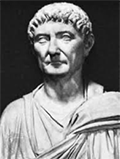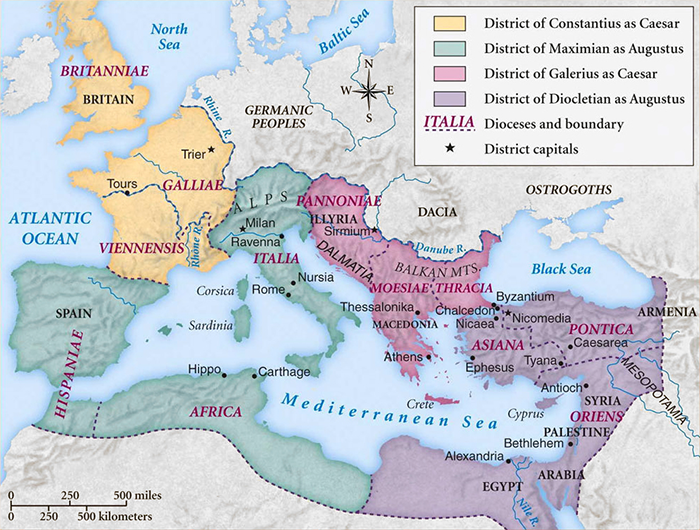The Byzantine Empire
Part 1: Royal Precedent The Byzantine Empire was the successor to the Roman Empire in the East and carried on Roman traditions, while also adding new ones, for nearly 1,000 years after the fall of the Western Empire. The Roman emperor Diocletian had studied geography and history and thought that the Empire as it stood in the late 3rd Century was too large for one man to rule effectively. In November 285, he named his son-in-law, Maximian, as commander of the Empire in the West. Diocletian kept power in the East and ostensibly ruled the West as well because he retained for himself veto power over any decisions made by Maximian. The two leaders agreed on the direction that the Empire should take and were content operating in their separate spheres. It marked a peaceful change from the several dozens of military anarchy through which the people of the Roman had lived. In the previous 50 years alone, a full 26 had sat on the throne; much of the trouble had arisen from a lack of a strong ruler and/or a known and capable successor. 
Thinking ahead to the tricky element of succession, Diocletian (right) created a four-man head of government scheme that, with its two tiers of two rulers each, should, he thought, ensure a smooth transition from one ruler to the next. This new plan named Diocletian and Maximian as Augusti. Each of them would have a Caesar under them, as second-in-command, designated to succeed whichever Augustus he reported to, in the event of the top man's death. Maximian chose as his Caesar his Praetorian commander Constantius, whom he also adopted. For his Caesar, Diocletian chose Galerius. The four men divided the Empire between them:
 This tetrarchy generally did what it was supposed to do, with each of the four men ruling over one-quarter of the Empire and having authority to put down rebellions, such as the one that Galerius dealt with in Egypt in 291–293. In 305, both Diocletian and Maximian, the Augusti (co-emperors) abdicated, and their Caesars, Constantinus and Galerius, became co-emperors. Significantly, the younger Constantinus and Maxentius, the son of Maximian, did not follow in their fathers' footsteps and become Caesars. Instead, Galerius's nephew, Maximinus, and Severus became the co-emperors-in-waiting. For the next two decades, the men at the top vied for control, fighting battle after battle against one another. Emerging from this internecine conflict was Constantine, in 324. Next page > Constantine's New Capital > Page 1, 2, 3, 4, 5 |
|
Social Studies for Kids
copyright 2002–2025
David White




